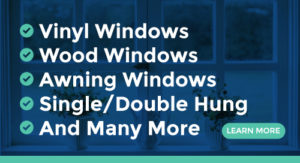
7 Ways to Get the Lowest Price on New Windows
Upgrading your home’s windows is more than just an aesthetic decision—it’s a strategic move towards energy efficiency, enhanced comfort, and increased property value. However, navigating the market to find the best deals on new windows can be daunting. With the right approach, it’s possible to make significant savings without compromising on quality. This blog aims to demystify the process, providing you with seven actionable strategies to secure the lowest prices on new windows. From understanding the basics of window costs to negotiating deals and leveraging rebates, we’ve got you covered. Prepare to empower yourself with knowledge that could save you thousands on your next home improvement project.
Understanding the Basics of Window Costs
Before diving into savings strategies, it’s crucial to grasp the cost dynamics of purchasing new windows. The price of new windows is influenced by several factors, including the materials used, the type of window, and the number of windows you’re planning to install.
Materials and Types:
- Vinyl Windows: Known for their affordability and low maintenance, vinyl windows offer good insulation and come in various styles. Average cost: $250-$600 per window.
- Wood Windows: Wood windows provide a classic look and excellent insulation but require more upkeep. Average cost: $300-$700 per window.
- Aluminum Windows: These are durable and resist corrosion, making them ideal for humid climates. However, they offer less insulation. Average cost: $200-$450 per window.
- Fiberglass Windows: Fiberglass windows are robust, energy-efficient, and low maintenance, but come at a higher price. Average cost: $500-$1,500 per window.
Types of Windows:
- Single-Hung and Double-Hung: These are common in many homes, with double-hung windows typically costing more due to their functionality.
- Casement and Sliding: Offer ease of use and modern aesthetics, with casement windows generally being more expensive.
- Bay and Bow Windows: These add architectural interest and space to a room but are among the priciest options.

Cost by Number of Windows:
Purchasing and installing multiple windows at once can often lead to volume discounts, reducing the overall cost per window. For example, while a single window replacement might cost around $600, replacing 10 windows in a single project could lower the price to $500 per window, thanks to bulk pricing.
7 Strategies to Get the Lowest Price on New Windows
1. Compare Quotes
- Start by obtaining quotes from multiple suppliers and installers. This not only gives you a sense of the market rate but also positions you to leverage one quote against another for better deals. Ensure that the quotes are itemized, comparing like for like in terms of window specifications and installation costs.
2. Buy Off-Season
- Window replacement services tend to be in higher demand during warmer months. Plan your purchase during the off-season, typically late fall through winter, when demand is lower. Companies may offer discounts to keep their teams busy.
3. Consider Less Popular Brands
- While well-known brands command premium prices, there are several high-quality, less recognized brands that offer similar performance at a lower cost. Research and seek recommendations from trusted professionals to discover these alternatives.
4. Look for Overstock and Discontinued Lines
- Suppliers may have excess stock or discontinued lines they’re willing to sell at a discount. While this might limit your options, it can lead to significant savings, especially if you’re not strict about specific styles or features.
5. Negotiate
- Don’t accept the first price you’re quoted. Use the competitive market to your advantage by negotiating the price. Be open about the quotes you’ve received from competitors and ask if they can match or beat those prices.
6. DIY Installation for Simple Replacements
- If you’re handy and the project is straightforward, consider installing the windows yourself. However, ensure you understand the scope of work and the warranty implications. Some warranties might be void if the installation isn’t done by a certified professional.
7. Apply for Rebates and Tax Credits
- Government incentives for energy-efficient home improvements can reduce your net cost. Research local, state, and federal rebates and tax credits for installing energy-efficient windows and factor these into your budgeting.

Additional Tips for Saving Money
Beyond the seven strategies, there are additional considerations that can influence the cost-effectiveness of your window replacement project.
Maintenance and Repair vs. Replacement
- Evaluate whether your current windows truly need replacing or if maintenance and repairs could extend their life at a lower cost. This is particularly relevant for wood windows, where issues might be superficial and repairable.
Energy Efficiency Considerations
- Investing in energy-efficient windows can offer long-term savings on heating and cooling costs. While the upfront cost may be higher, the return on investment through reduced utility bills can be significant.
Group Purchase Discounts
- If multiple homes in your neighborhood or community association are considering window replacements, there may be an opportunity to negotiate a group discount with suppliers or installers.
Navigating the process of purchasing new windows for your home doesn’t have to be a daunting task. By employing strategic approaches such as comparing quotes, buying off-season, and considering less popular brands, you can significantly reduce the financial burden. Remember, the cheapest option isn’t always the best in the long term. Balancing upfront costs with long-term benefits, such as energy savings and durability, ensures that your investment in new windows enhances your home’s value and comfort for years to come.

Detailed Look at Window Costs
The cost of new windows varies widely based on factors such as material, type, brand, and additional features like energy efficiency enhancements or custom designs. Here, we’ll break down these costs further to provide a clearer picture of what homeowners can expect to spend.
Material Costs
- Vinyl: Vinyl windows are praised for their affordability, durability, and low maintenance. Prices generally range from $250 to $600 per window, making them a popular choice for budget-conscious homeowners.
- Wood: Offering a classic aesthetic and excellent insulation properties, wood windows are a more premium option. Costs can vary from $300 to $700 per window, depending on the type of wood and the design complexity.
- Aluminum: Known for their strength and slim profiles, aluminum windows are less common in residential settings but favored for modern designs. Prices range from $200 to $450 per window.
- Fiberglass: Fiberglass windows offer the best of both worlds in terms of maintenance and energy efficiency but at a higher price point, usually between $500 and $1,500 per window.
Type and Installation Costs
- Single-Hung vs. Double-Hung: Single-hung windows are generally more affordable than double-hung windows due to their simpler design. The cost difference can be around $100 to $200 per window.
- Casement Windows: Offering full window openings for ventilation, casement windows are slightly more expensive due to their complex mechanisms, with prices typically starting at around $300 to $800 per window.
- Bay and Bow Windows: Bay windows extend outward from the home’s façade, creating additional space and panoramic views. Given their complexity and size, they are among the most expensive, with costs ranging from $1,000 to $4,500 per window, including installation.

Cost by Number of Windows
Purchasing and installing multiple windows at once can often lead to volume discounts, reducing the overall cost per window. For example, while a single window replacement might cost around $600, replacing 10 windows in a single project could lower the price to $500 per window, thanks to bulk pricing.
Energy-Efficient Windows
Opting for energy-efficient windows with features like double glazing, low-E coatings, and inert gas fill can lead to higher upfront costs—typically 10-15% more than standard windows. However, the long-term savings on energy bills can offset these initial investments over time.
Customization and Additional Features
Custom sizes, shapes, colors, and additional features like impact-resistant glass or integrated blinds can significantly increase the cost of windows. Customization might add 25-50% to the base cost of a standard window, depending on the extent of the customization required.

Budgeting for New Windows
When planning a window replacement project, it’s crucial to account for the full scope of costs, including the windows themselves, installation, any necessary repairs to the surrounding frame or wall, and disposal of the old windows. A comprehensive budget should also consider potential savings from energy efficiency improvements and available tax credits or rebates.
Financing Options
For homeowners concerned about the upfront costs of window replacement, financing options such as home improvement loans, home equity lines of credit, or manufacturer/supplier financing programs can make the project more manageable. Some energy-efficient window installations may qualify for special financing terms or rebates, further reducing the financial burden.
The investment in new windows is considerable, but the benefits—ranging from improved home comfort and aesthetics to energy savings and increased property value—make it a worthwhile endeavor. By understanding the factors that influence window costs and employing strategic approaches to minimize expenses, homeowners can ensure they get the best possible value for their investment. Remember, the cheapest option upfront may not always offer the best value over the windows’ lifetime. Prioritizing quality, energy efficiency, and a reputable installation service will yield dividends in comfort, savings, and satisfaction for years to come.
Armed with these strategies, homeowners can approach their window replacement projects with confidence, secure in the knowledge that they are equipped to make informed decisions that balance cost, quality, and efficiency. The right windows not only improve the aesthetic appeal and energy efficiency of your home but also contribute to a sustainable, cost-effective lifestyle.



Leave a Reply